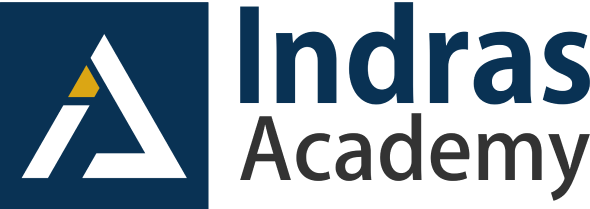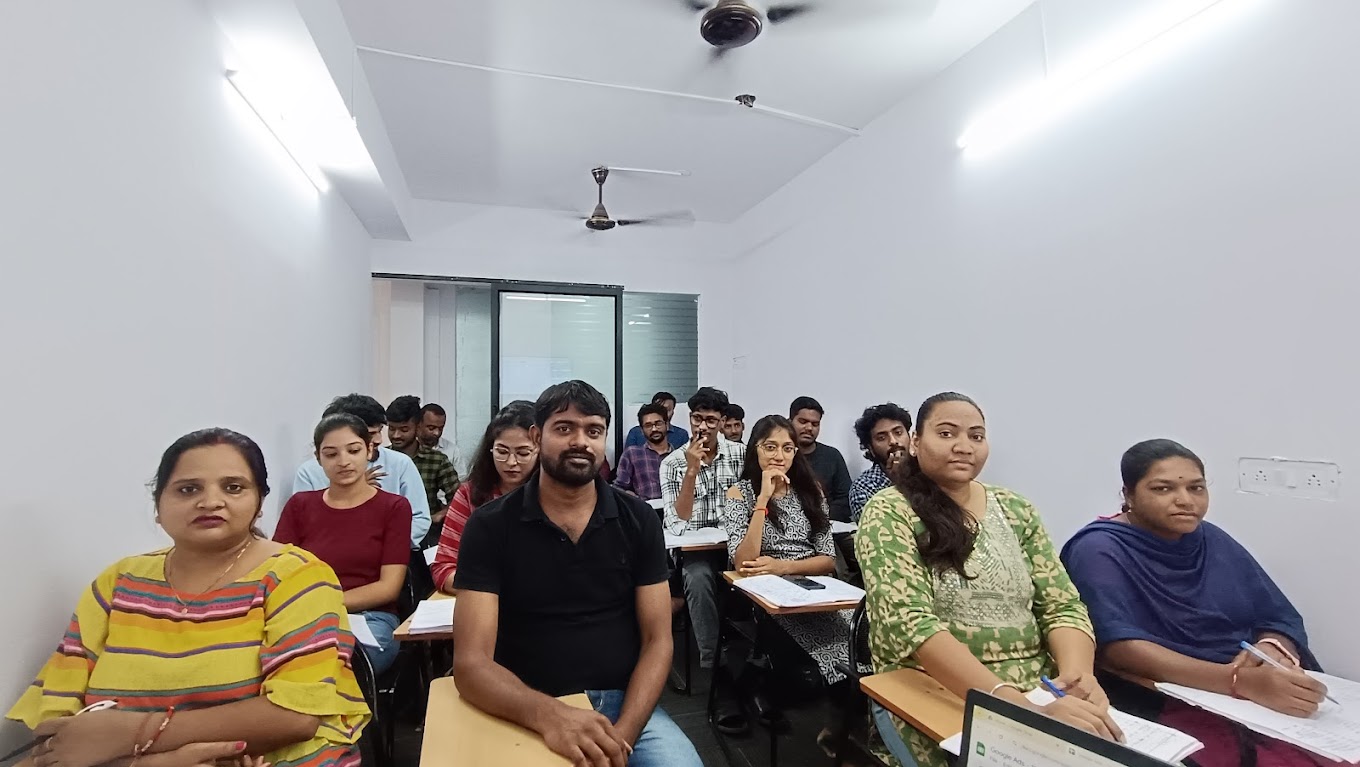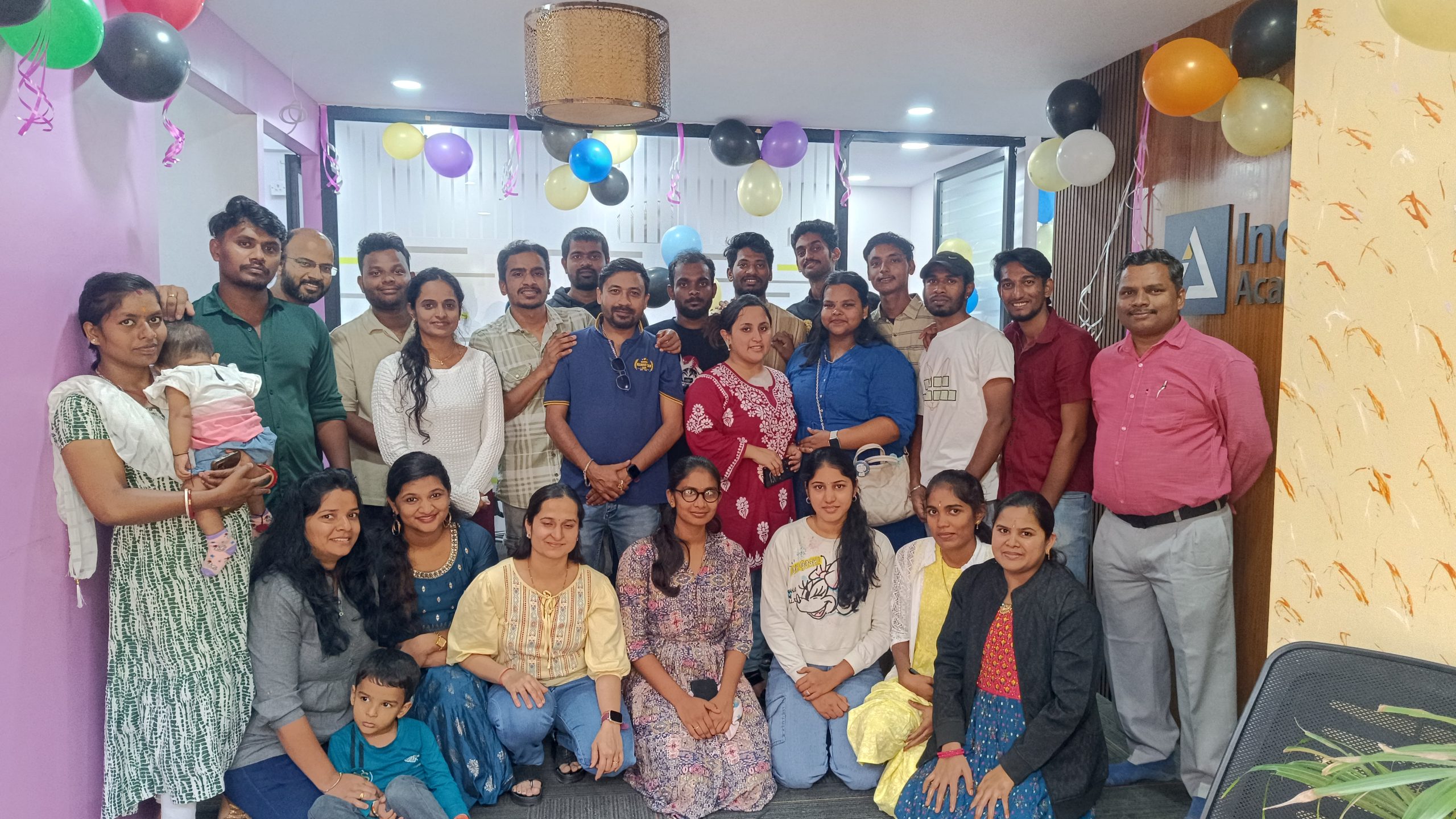Best Data Science Course in Bangalore
Kickstart your career with our Data Science courses in Bangalore and gain in-depth expertise in machine learning, AI, and data analytics. Our data science training in Bangalore is designed for beginners and professionals looking to upskill with hands-on projects and placement support.
About Us
Indra's Academy
Indras Academy, established in 2014, is a premier institute offering data science courses in Bangalore with a strong focus on hands-on learning and career growth. With over 10+ years of training experience, 10,000+ students trained, and 400+ successful batches, we are committed to providing top-notch data science training in Bangalore.
Our data science training in Bangalore covers essential concepts like machine learning, Python, SQL, and AI, ensuring a comprehensive learning experience. We provide hands-on exposure with live projects, case studies, and real-world applications to enhance practical skills.
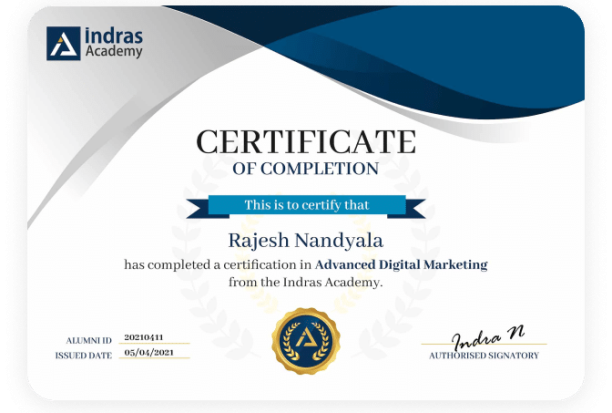
Why Choose Us

Certifications
Earn industry-recognized certifications that add value to your profile and boost your career prospects.

Live Projects
Gain hands-on experience by working on real-time projects to apply your digital marketing skills.

Placement Support
We provide dedicated placement assistance to help you secure a job in the digital marketing industry.

Mock interviews
Participate in mock interviews to build confidence and improve your interview skills.

Personalized LearningGuaranteed Interview Calls
Receive guaranteed interview opportunities with top companies in Bangalore.

Resume build up session
Enhance your resume with expert guidance to make it stand out to employers.
Your Journey to Success in Data Science
There are numerous careers available in Data Science for students and professionals from all backgrounds from creative to technical.

Get Trained

Practical Assignments

Work on Real-Time Projects

Interview Preparation

Land Your Dream Job
Data Science Course Syllabus
Lorem ipsum dolor sit amet, consectetur adipiscing elit. Ut elit tellus, luctus nec ullamcorper mattis, pulvinar dapibus leo.

Python
Learn Python to explore data science and machine learning with simple exercises and real-world examples.
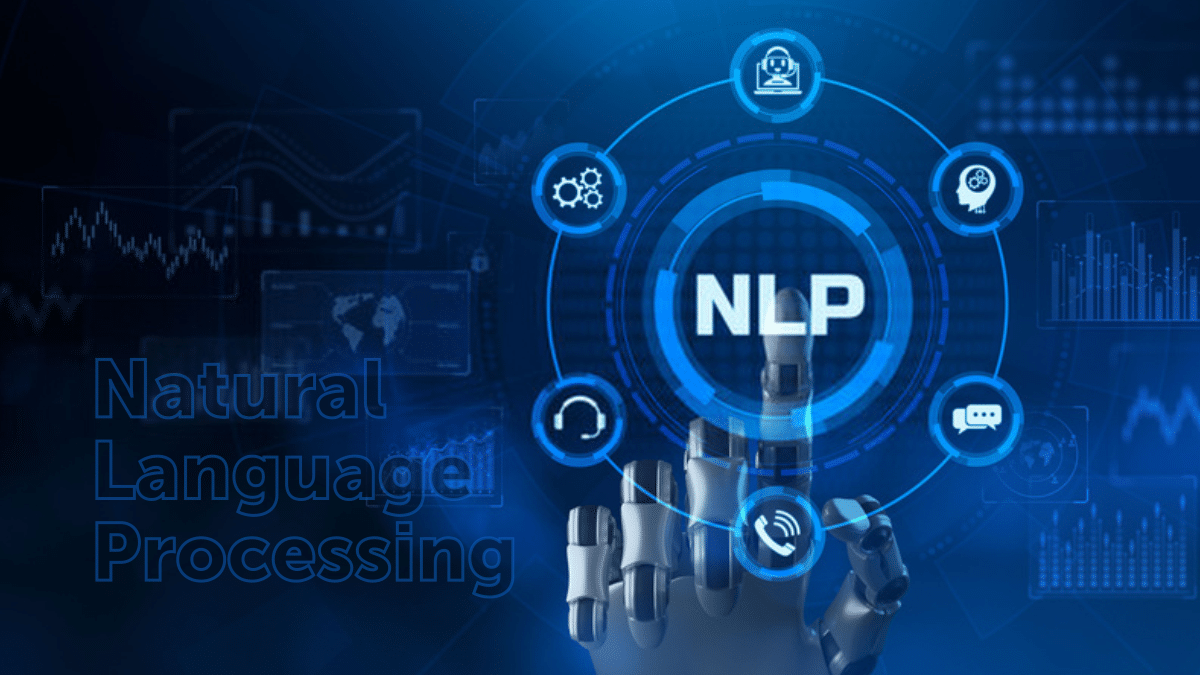
Natural Language Processing
Natural Language Processing is an integral part of machine learning and it helps to develop heuristic programming.

Statistics
Under our expert guidance, you’ll become a Pro Data Scientist who has sound knowledge and practical experience in statistics.

Machine Learning
Learn how to program in R and Python, how to use machine learning algorithms, and how to build your own projects
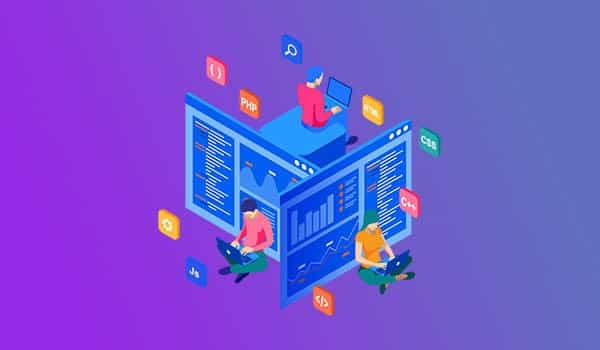
Time Series
Learn how time series data is recorded over time and used for analysis. It helps in predicting future trends accurately.

SQL
Predictive Analytics helps to provide better predict and forecast on the basis of historical data.

TABLEAU
Tableau is an all-purpose tool that is used in data analysis and data interpretation.

Data visualization
Data visualization helps the data to be changed into an easily interpretable format. Become a data scientist.

R Programming
This course is perfect for those who want to learn more about data science and how to use R programming to analyze data.
Python
1. Programming Basics & Environment Setup
Topics:
- Installing Anaconda Anaconda Basics and Introduction
- Get familiar with version control, Git and GitHub.
- Basic Github Commands.
- Introduction to the Jupyter Notebook environment.
- Basics Jupyter notebook Commands.
- Programming language basics.
2. Strings, Decisions & Loop Control
Topics:
- Working With Numbers, Booleans and Strings, String types and formatting, String operations
- Simple if Statement, if-else Statement
- if-elif Statement.
- Introduction to while Loops, for
- Loops, Using continue and break
3. Python Data Types
Topics:
- List, Tuples, Dictionaries
- Python Lists, Tuples, Dictionaries
- Accessing Values, Basic Operations
- Indexing, Slicing, and Matrixes
- Built-in Functions & Methods
- Exercises on List, Tuples And Dictionary
4. Functions And Modules
Topics:
- Introduction To Functions
- Defining & Calling Functions
- Functions With Multiple Arguments
- Anonymous Functions – Lambda
- Using Built-In Modules, User-Defined
- Modules, Module Namespaces,
- Iterators And Generators
5.File I/O An d Exceptional Handling and Regular Expression
Topics:
- Opening and Closing Files, open Function, file Object Attributes, close() Method, Read, write, seek.
- Exception Handling, try-finally Clause
- Raising an Exceptions, User-Defined Exceptions
- Regular Expression- Search and Replace
- Regular Expression Modifiers
- Regular Expression Patterns
6. Data Analysis Using Numpy
Topics:
- Introduction to Numpy. Array Creation, Printing Arrays, Basic Operation – Indexing, Slicing and Iterating, Shape Manipulation – Changing shape, stacking and splitting of array
- Vector stacking, Broadcasting with Numpy, Numpy for Statistical Operation
7. Data Analysis Using Pandas
Topics:
- Pandas : Introduction to Pandas
- Importing data into Python
- Pandas Data Frames, Indexing Data Frames ,Basic Operations With Data frame, Renaming Columns, Subsetting and filtering a data frame.
8. Data Visualization using Seaborn
Topics:
- Seaborn: Intro to Seaborn And Visualizing statistical relationships, Import and Prepare data. Plotting with categorical data and Visualizing linear relationships.
- Seaborn Exercise
9. Exercises
Topics:
- 3 Case Study on Numpy, Pandas
- 1 Case Study on Pandas And Seaborn
Statistics
1. Introduction to Statistics
Topics:
- Variable and its types
- Quantitative, Categorical, Discrete, Continuous
- Outliers, Causes of Outliers, How to treat Outliers, I-QR Method and ZScore Method
2. Fundamentals of Math and Probability
Topics:
- Probability distributed function & cumulative distribution function.
- Conditional Probability, Baye’s Theorem
- Problem solving for probability assignments
- Random Experiments, Mutually Exclusive Events, Joint Events, Dependent & Independent Events
3. Inferential Statistics
Topics:
- Central Limit Theorem
- Point estimate and Interval estimate
- Creating confidence interval for population parameter
4. Descriptive Statistics
Topics:
- Measures of Central Tendency – Mean, Median and Mode
- Measures of Dispersion – Standard Deviation, Variance, Range, IQR (Inter-Quartile Range)
- Measure of Symmetricity/ Shape – Skewness and Kurtosis
5. Inferential Statistics
Topics:
- Characteristics of Z-distribution and T-Distribution.
- Type of test and rejection region
- Type of errors in Hypothesis Testing
6. Hypothesis Testing
Topics:
- Type of test and Rejection Region
- Type o errors-Type 1 Errors, Type 2 Errors. P value method, Z score Method. The Chi-Square Test of Independence.
- Regression. Factorial Analysis of Variance. Pearson Correlation Coefficients in Depth. Statistical Significance
- Null and Alternative Hypothesis Onetailed and Two-tailed Tests, Critical Value, Rejection region, Inference based on Critical Value
- Binomial Distribution: Assumptions of Binomial Distribution, Normal Distribution, Properties of Normal Distribution, Z table, Empirical Rule of Normal Distribution & Central Limit Theorem and its Applications
Machine Learning
1. Data Preprocessing
Topics:
- Types of Missing values (MCAR, MAR, MNAR), Methods to handle missing values
- Outliers, Methods to handle outliers: IQR Method, Z Method
- Feature Scaling: Definition , Methods: Absolute Maximum Scaling, Min-MaxScaler, Normalization, Standardization, Robust Scaling
2. Logistic Regression Model
Topics:
- Definition. Why is it called the “Regression model”?
- Sigmoid Function, Transformation & Graph of Sigmoid Function
3. Evaluation Metrics for Classification
Topics:
- Misclassification, TPR, FPR, TNR, Precision, Recall, F1 Score, ROC Curve,and AUC. Using Python library Sklearn to create the Logistic Regression Model and evaluate the model created model
4. Decision Tree Model
Topics:
- Definition, Basic Terminologies, Tree Splitting Constraints, Splitting
- Splitting Methods:
– GINI, Entropy, Chi-Square, and Reduction in Variance - Using Python library Sklearn to create the Decision Tree Model and evaluate the model created
5. Random Forest Model
Topics:
- Ensemble Techniques:
Bagging/bootstrapping & Boosting. - Definition of Random Forest, OOB Score
- K-Fold Cross-Validation
6. Naive Baye’s Model
Topics:
- Definition, Advantages, Baye’s Theorem Applicability, Disadvantages of Naive Baye’s Model, Laplace’s Correction, Types of Classifiers: Gaussian, Multinomial and Bernoulli
- Using Python library Sklearn to create the Naive Baye’s Model and evaluatethe model created
7. K Means and Hierarchical Clustering
Topics:
- Definition of Clustering, Use cases of Clustering
- K Means Clustering Algorithm,Assumptions of K Means Clustering
- Sum of Squares Curve or Elbow Curve
8. Machine Learning Exercises
Topics:
- Business Case Study for Kart Model
- Business Case Study for Random Forest
- Business Case Study for SVM
- Business Case Study for Linear Regression
- Business Case Study for Logistic Regression
- Business Case Study for KMean Cluster
Time Series
1. Introduction to Time Series Forecasting
Topics:
- Basics of Time Series Analysis and Forecasting
- Method Selection in Forecasting
- Moving Average (MA) Forecast Example
- Different Components of Time Series Data
- Log Based Differencing, Linear Regression for Detrending
2. Introduction to ARIMA Models
Topics:
- ARIMA Model Calculations, Manual ARIMA Parameter Selection
- ARIMA with Explanatory Variables
- Understanding Multivariate Time Series and their Structure
- Checking for Stationarity and Differencing the MTS
NLP
1. Natural Language Processing
Topics:
- Text Analytics
- Introduction to NLP
- Use cases of NLP algorithms
- NLP Libraries
- Need for Textual Analytics
- Applications of NLP
- Word Frequency Algorithms for NLP Sentiment Analysis
2. Text Analysis
Topics:
- Distance Algorithms used in Text Analytics
- String Similarity
- Cosine Similarity Mechanism
- The similarity between two text documents
- Levenshtein distance – measuring the difference between two sequences
3. Understanding Keras API for implementing Neural Networks
Topics:
- Information Retrieval Systems
- Information Retrieval – Precision,
- Recall,F- score TF-IDF
- KNN for document retrieval
- K-Means for document retrieval
- Clustering for document retrieval
4. Text Pre Processing Techniques
Topics:
- Need for Pre-Processing
- Various methods to Process the Textdata
- Tokenization, Challenges inTokenization
- Stopping, Stop Word Removal
5. Stemming
Topics:
- Stemming – Errors in Stemming
- Types of Stemming Algorithms – Table
- Lookup Approach
- N-Gram Stemmers
6. Use cases on NLP
Topics:
- Sentiment Analysis
- Content summarization
7. K Means and Hierarchical Clustering
Topics:
- Definition of Clustering, Use cases of Clustering
- K Means Clustering Algorithm,Assumptions of K Means Clustering
- Sum of Squares Curve or Elbow Curve
8. Machine Learning Exercises
Topics:
- Business Case Study for Kart Model
- Business Case Study for Random Forest
- Business Case Study for SVM
- Business Case Study for Linear Regression
- Business Case Study for Logistic Regression
- Business Case Study for KMean Cluster
SQL
1. RDBMS And SQL Operations
Topics:
- Introduction To RDBMS
- Single Table Queries – SELECT, WHERE,ORDER BY, Distinct, And, OR
- Multiple Table Queries: INNER, SELF,CROSS, and OUTER, Join, Left Join, Right Join, Full Join, Union
TABLEAU
1. Introduction to Tableau
- Connecting to data source
- Creating dashboard pages
- How to create calculated columns
- Different charts
Hands-on :
-Hands on on connecting data source and data cleansing
-Hands on various charts
2. Visual Analytics
Topics:
- Getting Started With Visual Analytics
- Sorting and grouping
- Working with sets, set action
- Filters: Ways to filter, Interactive Filters
- Forecasting and Clustering
Hands-on :
– Hands on deployment of Predictive
– model in visualization
3. Dashboard and Stories
Topics:
- Working in Views with Dashboards and Stories
- Working with Sheets
- Fitting Sheets
- Legends and Quick Filters
- Tiled and Floating Layout
- Floating Objects
Affordable Data Science Course Fees In Bangalore
We believe that our Data Scince course fees are competitive and affordable, while still providing the highest quality training and support.

Get Course Info
Get in touch for any questions or support—we’re just a message away!
Live Virtual
- 100% Job Support
- 10+ Certifications
- Work on Live Projects
₹59,999
₹38,000
Classroom
In-Person Classroom Training
- 100% Job Support
- 10+ Certifications
- Work on Live Projects
₹49,999
₹39,000
Industry Recognized Certification From Indras Academy
By the end of this extensive online and classroom data science training in Bangalore, you will receive a certificate of completion from Indras Academy. Additionally, you will gain industry recognition from top tech companies and data-driven organizations, enhancing your career prospects in the field of data science.
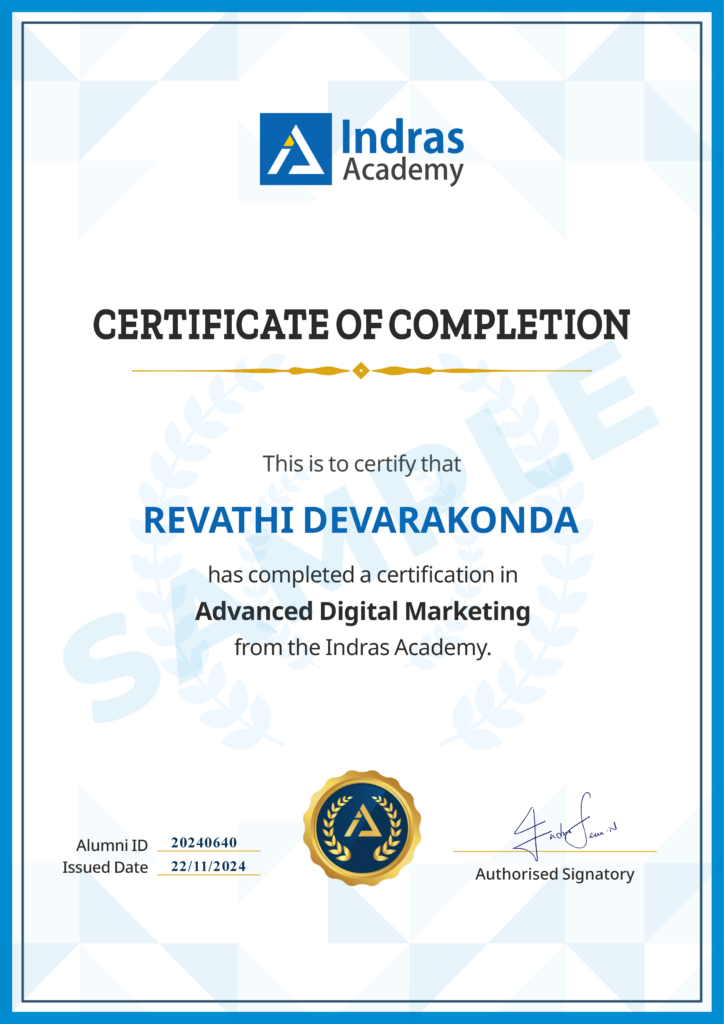

Our Alumni Work At
Our alumni have found success in renowned companies across the spectrum.








Upcoming Batch Details
We provide flexible batch timings to all our students. if this schedule does’t match feel free to contact us we will try to schedule appropriate timings based on your flexible timings.
Indras Academy Courses
Our academy offers a mix of practical workshops, virtual classrooms, and project-based learning.

Offline
Python
- Duration - 3 Months
- Course Fees - 31999

Offline
Video Editing
- Duration - 90 Days
- Course Fees - 29500

Offline
Graphic Design
- Duration - 4 Months
- Course Fees - 31999

Offline
Web Development
- Duration - 3 Months
- Course Fees - 29900

Offline
Web Design
- Duration - 3 Months
- Course Fees - 29900

Offline
UX/UI
- Duration - 4 Months
- Course Fees - 59999
FAQ’s
Learn from expert trainers in a state-of-the-art environment with personalized attention,
What is Data Science?
Data Science is nothing but an amalgam of methods integrating statistics, data analysis, and machine learning. A data scientist analyses processed and unprocessed data to enhance business decisions. Data Scientists must have good hands on Python, R, R Studio, Hadoop, MapReduce, Apache Spark, Apache Pig, Java, NoSQL database, Cloud Computing, etc.
Does this course cover basics?
Absolutely! At Indra’s Academy Bangalore, be it online or offline classes, we cover all the basic topics since we believe in making the fundamental concepts clear. Indra’s Academy makes sure all the candidates are pro in data science.
Who is eligible for this course?
To become a data scientist, candidates pursuing the course must have a Bachelor’s degree in Mathematics, Statistics, Computer Science or Data Science. Also, engineers from IT are also eligible to join this course.
Can I enroll for an online course?
Yes! Indra’s Academy is now offering online courses for students who cannot enroll for offline classes due to pandemic and also to offer excellent training for students all over the globe. Students from any part of the world can enroll for courses at Indra’s Academy.
Do I get job assistance at Indra's Academy?
As mentioned earlier, Indra’s Academy not only offers excellent coaching to students but also makes sure each candidate gets equal opportunity to interview in well-known organizations. We deliver 100% job assistance with a minimum of 30 interviews.
What is the duration of this course?
The duration of this course is 3 months. In these 3 months, our skilled and experienced trainers prepare candidates for complex company projects and also for tough interviews.
What is the average salary of data scientists?
Since data science is an extremely responsible and tough job, companies pay handsome salaries to skilled candidates. Initial salary ranges from 5-6 LPA.
What does the course cover?
The Data Science Course includes:
- Python and R programming
- Machine learning
- Exploratory Data Analysis
- Data Visualization
- Inferential Statistics
- Text Mining
- Deep Learning
- Predictive Modelling
- Etc

Get Course Info
Get in touch for any questions or support—we’re just a message away!
Success Stories
Be inspired by the accomplishments of our students who turned their passion into successful careers.
An excellent place to learn data science. The teachers are extremely knowledgeable and have a lot of industry experience. The training is structured well and covers all the fundamentals of the subject. The best part of the course is that they have live projects which they guide you through.

Suleman
Data Analyst
I was looking to learn Data Science and I came across indras academy. I started learning data science with indras academy. The course was very well designed and the entire learning experience was very professional. I would recommend indras academy to learn data science.

Surendra
Data Scientist
The syllabus is very vast and covers almost every possible topic in data science. The trainer is very helpful and explains the topics very clearly. The course material is good and there are assignments at the end of each module. I am happy with the course and the mentors.

Ganesh
Data Architect
Our Student Gallery

Talk to Experts
Get in touch for any questions or support—we’re just a message away!
